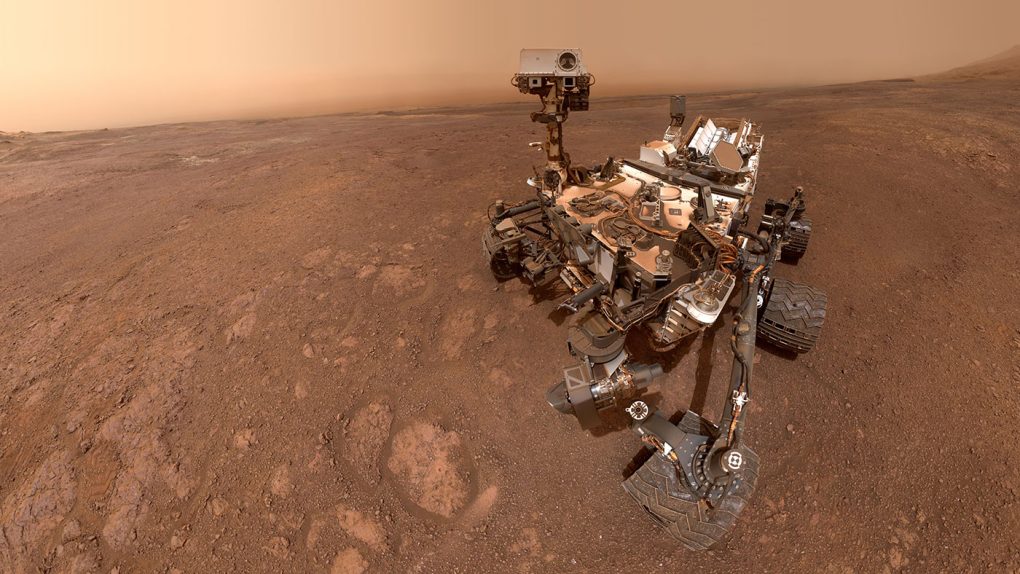NASA may be on the edge of its seat as it waits to see if its aging Opportunity rover will wake back up from its extended downtime, but it’s not the only piece of scientific hardware on the Red Planet. The trusty Curiosity rover is still going strong, and after spending over a year at its current location on the Vera Rubin Ridge, it’s ready to move on.
The Jet Propulsion Laboratory announced Curiosity’s move today and showed off a fancy selfie the rover snapped before it began its journey. The rover will now travel south towards a new area of the large geographical feature known as Mount Sharp.
“Curiosity has been exploring the ridge since September of 2017,” JPL explains in a blog post. “It’s now headed into the ‘clay-bearing unit,’ which sits in a trough just south of the ridge. Clay minerals in this unit may hold more clues about the ancient lakes that helped form the lower levels on Mount Sharp.”
Before the rover began its trip, JPL commanded it to snap 57 photos of itself with its robotic arm. The group then stitched the images together to form the resulting image, overlapping the images carefully so that the rover’s robotic arm actually disappears, appearing as though the photo was taken by an external camera.
Curiosity has been on Mars since August of 2012, and its initial mission timeline was scheduled to last roughly two years. It has since topped the six year mark and continues to perform at a level suitable for further scientific work.
2018 brought with it a whole slew of challenges for the Curiosity team. The rover’s drill, which it uses to pierce rock and obtain samples for further study, experienced extended downtime when a stabilizing mechanism broke. NASA engineers eventually invented a new way for the rover to use its drill without the stabilizing arm in place, allowing it to continue its mission.








